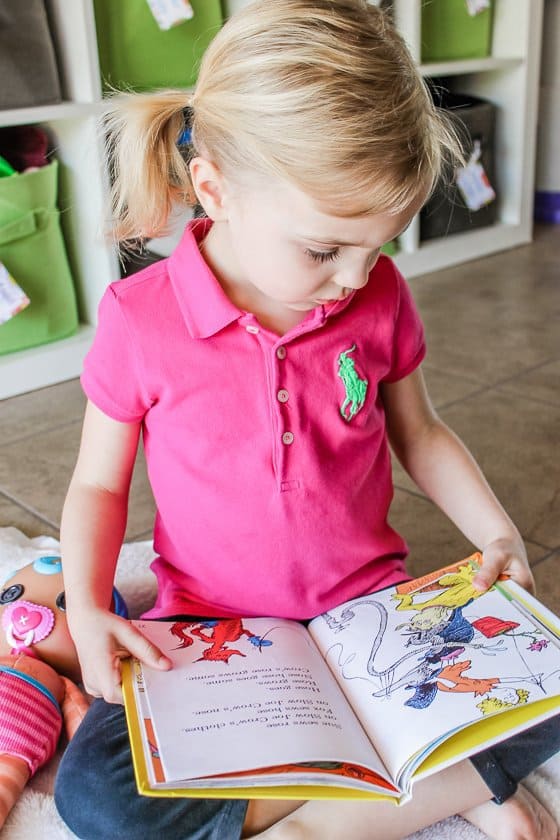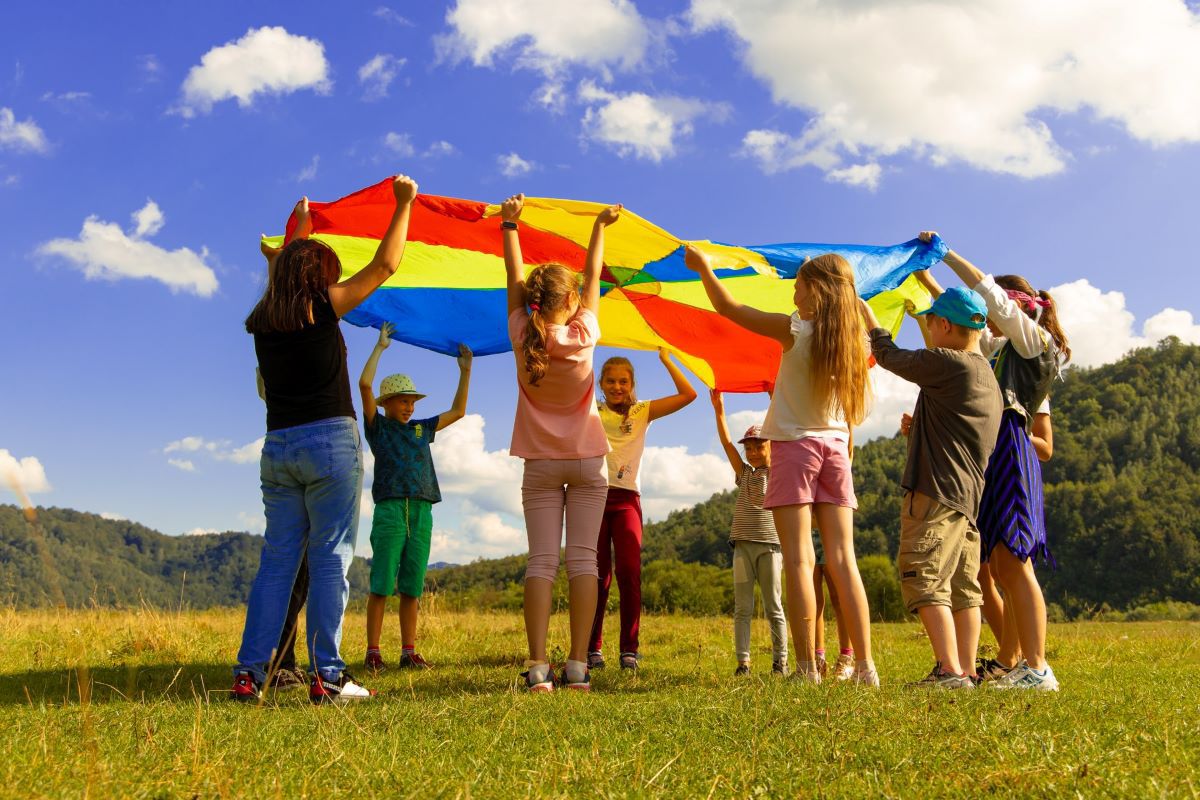Preschoolers are like little sponges, ready to soak up the world around them. They are busy transitioning from “babies” into “big kids” and are ready and willing to learn! This eagerness is a wonderful opportunity to help prepare your little one for kindergarten by taking storytime and transforming it into learning time.
With ever changing school requirements, more focus on standardized testing and big scary terms like “Common Core”, it’s never too early to help give your child a leg up when it comes to their education. Now, that doesn’t mean that this focus on learning can’t and should’t be fun! By focusing on a few strategies, you’ll have a confident, lover of reading in no time.

These strategies are similar to the toddler reading strategies but go a step further. Depending on if your child is actually in preschool, and if so, what kind they attend, some kids may already be doing these activities. But by tying these strategies into your daily activities at home and focusing on lessons in literature, phonemic awareness and using your child’s natural creativity, you will help to boost your child’s language development and and vocabulary immensely. Depending on your state, most kindergarteners are required to read a certain number of sight words by the end of the year so getting a jump start on individual sounds, blends and phonograms now can give your tot a big advantage!
Use these five strategies to help your child become the best reader they can be:
1. Read Alouds.
Read alouds are important at any age. Now that your little one is a preschooler they have the ability to sit longer and engage more with you when you read. By asking your child questions when you are reading, they will begin to develop the understandings of basic story concepts (characters, setting, plot, conflict and resolution). Stick to the basics: Who’s in the story? Oh a cat? Yes, the cat is the main character. That means the most important animal in the book! What’s he doing right now? What do you think will happen next? These simple questions will get your child ready to transition from “learn to read” to “reading to learn” sooner.
Tip : Remember to choose a variety of books and always let your child choose their favorites at story time! Taking a trip to the library is a great way to find new books and also makes your child feel invested in the story, since he or she chose it themselves.
2. Focus on what they know (environmental print).
What is environmental print? It’s the words kids see all around them everyday and is your child’s first opportunities to “read”. You can use these repetitive visuals to encourage kids to interact with print in their own environment. Next time you are driving, ask them what the word on the red sign says. Pretty sure your non-reader will say “STOP!”. This is because they see this word all of the time and they associate the red color with it. Now, if you see that word in a book you are reading, ask them what it says. If they don’t know (which they probably will not) then remind them of where they see it in the car. Now you have just helped them transition an “environmental print” word into a sight word!
Tip : You can do the same thing with words on food boxes, stores or their favorite TV shows. You may not want to take your child to eat at McDonalds, but chances are, they know what the sign says! Scoop up that teachable moment when it happens.

3. Rhyme time.
Making rhymes is the simplest trick for learning new words. Rhyming and other kinds of word play can help your child to hear differences between sounds and to understand that words are made up of individual sounds. Being able to rhyme will actually help your child learn to read and write later. Reading rhyming books, such as Dr. Seuss, with your preschooler is a simple way to expose your kids to rhymes.
4. Sounds, sounds, sounds.
Sounds are the building blocks of words and the most fundamental parts of learning to read. After your 3-5 year old knows their ABC’s begin asking them what the sound the letters make. English is a very difficult language, with all the spelling patterns, blends and rules; but begin with the basics. Start with the letters of their name and then work on others. If you think your child is ready, try the vowels, explaining that they make more than one sound! Don’t expect them to memorize all the sounds, but just knowing that a letter makes a sound is so important to learning to read.
5. Dramatic play.
Do you have a dramatic child? We feel you! Use this to your advantage by having your child engage in some dramatic storytelling! Pull out the dress up clothes and have your child act out a story for you. It can be one they already know or one they just made up. Ask them who the characters are, where it takes place and why they make the characters do what they did. This takes your child’s game a step closer to academics.
Tip : Help boost your preschooler’s every growing vocabulary further by introducing new words for them to use. Instead of the dog being “nice” ask if he’s enjoyable? pleasant? delightful? Introducing these new words will also help them to become better writers as they grow. Make these dramatic play sessions as simple or involved as you care to (or have the patience for), they will get the same benefit either way!
It is absolutely amazing to see how much your child learns during the preschooler stage. They begin as little toddling babies only saying a handful of words and leave ready to start school! It doesn’t take much to keep them wanting to learn, just remember to listen to your child’s cues. Don’t push them too much. You don’t have to sit down with them and a stack of worksheets to get them kinder-ready either. By focusing on developmentally appropriate materials, books and language, you will help a love of reading and writing grow naturally; along with a greater sense of confidence when it comes to books- and what could be better than that?
Read more helpful preschool tips here:
How To: Be a Preschool Super Mom
How to: Encourage Developing Fine Motor Skills
Photo Credits: Our Three Peas










































